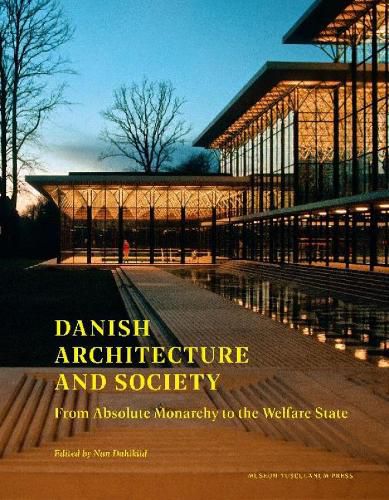Readings Newsletter
Become a Readings Member to make your shopping experience even easier.
Sign in or sign up for free!
You’re not far away from qualifying for FREE standard shipping within Australia
You’ve qualified for FREE standard shipping within Australia
The cart is loading…






Danish Architecture and Society offers a fascinating architectural history of the institutions and public buildings that have helped shape the everyday lives of Danes since the eighteenth century. The book charts the emergence and development as well as the grandeur and ultimate demise of these institutions, tracing the underlying–and changing–architectural and societal ideals that have been influential in terms of design, organization, and furnishing.
The individual contributions detail the often dramatic historical developments of buildings from industrialism’s heyday, such as train stations, post offices and customs houses. Although some of these still exist, a great many have today either been adapted to other functions or demolished. The contributing authors examine the significance of the buildings at the time they were constructed and attending understandings of sustainable building, contrasting these with present-day notions of architecture and construction as a more makeshift phenomenon.
Through more than two hundred illustrations–drawings, sketches, plans and photos, much of it never before published–the authors provide a vivid and compelling account of Danish architectural history and its influence in framing the Danish welfare state as we know it today.
$9.00 standard shipping within Australia
FREE standard shipping within Australia for orders over $100.00
Express & International shipping calculated at checkout
Danish Architecture and Society offers a fascinating architectural history of the institutions and public buildings that have helped shape the everyday lives of Danes since the eighteenth century. The book charts the emergence and development as well as the grandeur and ultimate demise of these institutions, tracing the underlying–and changing–architectural and societal ideals that have been influential in terms of design, organization, and furnishing.
The individual contributions detail the often dramatic historical developments of buildings from industrialism’s heyday, such as train stations, post offices and customs houses. Although some of these still exist, a great many have today either been adapted to other functions or demolished. The contributing authors examine the significance of the buildings at the time they were constructed and attending understandings of sustainable building, contrasting these with present-day notions of architecture and construction as a more makeshift phenomenon.
Through more than two hundred illustrations–drawings, sketches, plans and photos, much of it never before published–the authors provide a vivid and compelling account of Danish architectural history and its influence in framing the Danish welfare state as we know it today.